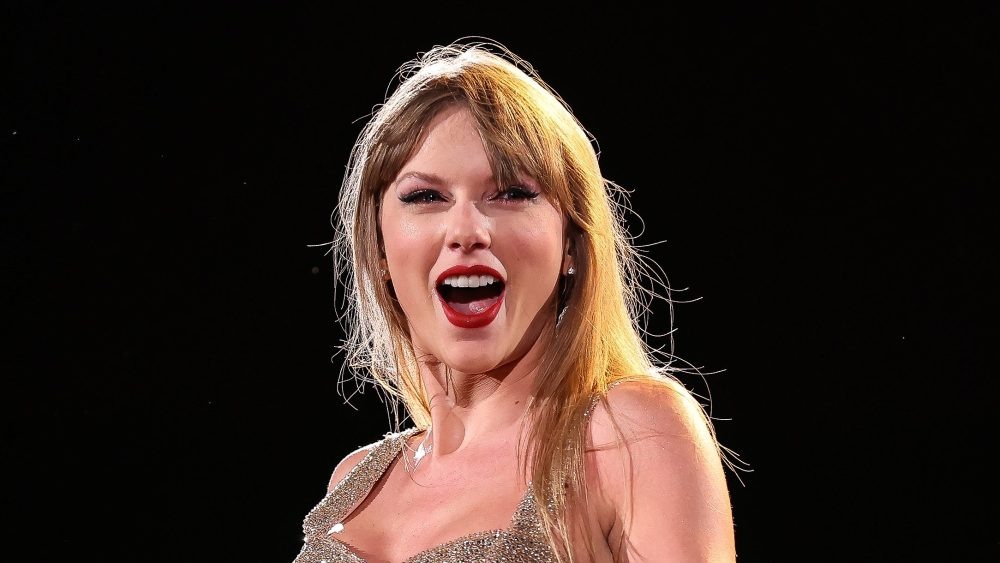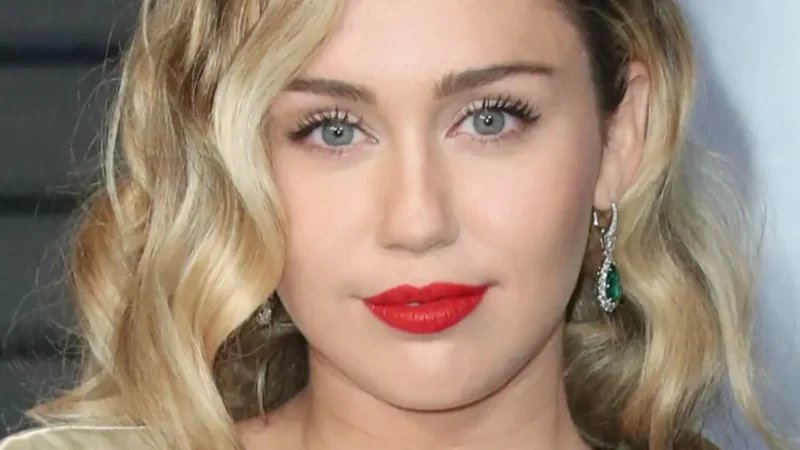9 Ways Taylor Swift Has Changed the Music Business

Taylor Swift’s seismic impact on the music industry over the past 17 years since her debut isn’t limited to her unparalleled commercial success, but also encompᴀsses her influence on everything from artists’ rights to smashing the traditional album release model to changing the conversation about song rights and ownership. She’s an advocate, a style icon, a marketing wiz, a prolific songwriter, a pusher of visual boundaries and a record-breaking road warrior. And she sells a ton of albums — including, as we’ve seen over the past couple of years, remakes of her old ones.
It’s rare to ascend to the pinnacle of pop stardom, as Swift has, and rarer still to impact the business so profoundly. Since the debut of her first album at age 16, Swift has shown a preternatural gift for engaging with her fans, inspiring the kind of devotion that leaves them to await each new song, album and merch release with bated breath — not to mention the kind of fervor that can crash Ticketmaster (and result in a Senate Judiciary hearing).
During Swift’s reign, she has used her untold influence to change seemingly every aspect of the music industry — from helping inspire a vinyl revolution, to motivating record labels to alter the way contracts are written, to changing the way concert tickets are bought and sold. And when it comes to the music itself, she’s navigated shifts in her sound with savvy and (for the most part) grace, retaining the base of devoted young fans who have grown up alongside her while expanding to new audiences through her embrace of everything from pop to trap to folk to hip-hop.

Below, here are nine ways Taylor Swift has changed the music business.
She’s a Champion of Artists’ Rights
It’s easy to forget today, but for a nearly three-year stretch in the 2010s, Taylor Swift’s music was MIA on Spotify. That’s because the singer-songwriter — who had recently crossed over into pop megastardom with her mᴀssive album 1989 — pulled her catalog from the streaming service in November 2014 in protest over low royalty payouts for its “freemium” model. Just months prior, Swift had hinted at her displeasure in a Wall Street Journal op-ed in which she wrote, “Valuable things should be paid for. It’s my opinion that music should not be free.” Swift wouldn’t allow her music back on the service until June 2017.

That wasn’t the last time Swift flexed her industry power in the name of artist rights. In 2015, she threatened to keep 1989 off of Apple Music, which was then preparing to launch, over its decision not to pay royalties to artists during the streamer’s free three-month trial period. Apple made an about-face just one day later by announcing that it would pay those royalties after all. “When I woke up this morning and saw what Taylor had written, it really solidified that we needed a change,” tweeted Apple’s then-senior vp of internet services and software Eddy Cue. The company’s abrupt change of heart was a testament to Swift’s superstar clout, leveraged in service of artists at all levels. –Chris Eggertsen
She Mastered the Art of Taking Control
After the master recordings for her first six albums, along with her former label Big Machine Label Group, were sold to Scooter Braun’s Ithaca Holdings in 2019, Swift announced that she would re-record the songs included in the sale to gain master ownership. In a Tumblr post, she called the sale to Braun, with whom she was not on good terms, a “worst case scenario.” A little over a year later, Braun sold Swift’s work to Shamrock Holdings. She moved forward with her plans to re-record all of her early albums, but it was a risky move — one that had basically never been done before on such a large scale. To do it would require incredible amounts of time and money from the already busy superstar to recreate her old work with precision — plus, there was no guarantee that fans would ditch the original recordings for her new ones.
But by the time her first Taylor’s Version album was released, there was no doubt the Swifties would have her back. Fearless (Taylor’s Version) debuted at No. 1 on the Billboard 200 chart. A year after its release, it became even more clear that Swift’s plan was working. The original version of Fearless had earned just 242,000 equivalent album units that year, compared to the new Taylor’s Version of the album which earned 1 million equivalent album units in the same time period. Now, Swift is three albums into her quest to “regain the sense of pride [she] once had” in her old work, as she once put it on Twitter. All three of the re-releases out so far – Fearless (Taylor’s Version), Red (Taylor’s Version) and Speak Now (Taylor’s Version) — have debuted at No. 1 on the Billboard 200. –Kristin Robinson

She Found a Way to Dominate Across Consumption Metrics
For several years in the 2010s, Taylor pulled her music from streaming services, fearing that the music’s free availability would cut into her physical sales. But in the 2020s, she found a way to have her cake and sell it too: 2022’s Midnights not only scored the third-largest-ever streaming week for an album with its 549.26 million on-demand U.S. official streams in its debut frame, but it also sold 1.14 million copies, including a record 575,000 on vinyl. She achieved this through inspired promotion and marketing that puts both a premium on streaming her new material early and often to be part of the conversation around it — and encouraging extra listens through surprise drops like the Midnights (3am Edition), which arrived mere hours after the original set and added seven new tracks — as well as an emphasis on her albums as art objects and collector’s items, which have helped spur physical sales (of vinyl in particular) to commercial heights not seen in decades.
With different-colored LP variants and packaging containing fan-servicing easter eggs and bonus materials, Swifties will often buy multiple copies of the same Swift albums, both online through her web store and through major chain and independent record stores, where she’s encouraged in-person shopping by releasing a number of store exclusives. The result is perhaps the lone contemporary artist who can both stream as well as Drake and sell as well as an Adele, the exemplar for what commercial success as a recording artist looks like in 2023. –Andrew Unterberger
She’s a Tour-de-force
Taylor’s dominance of the touring industry goes back more than a decade: when Swift’s acceptance speech was famously interrupted by Kanye West at the 2009 MTV Video Music Awards, Swift was in the middle of her sophomore Fearless tour, performing in front of 1.2 million fans across the United States, U.K and Australia, earning $66 million in ticket sales. In 2010, at the age of 21, Swift headlined her first stadium show at Gillette Stadium in Foxborough, Mᴀss. and has returned every tour since, including three stops in May 2023 on her Eras Tour, for a record 13 concerts at the stadium that’s long been home to the New England Patriots.
Swift would go on to cross the $100 million mark in 2011 with her Speak Now Tour and generate an impressive $150 million with the help of longtime promoter and family friend Louis Messina from the Messina Touring Group, and go on to generate $250 million in sales for her 2014-2015 1989 World Tour. The success of each tour was proof of just how much fans valued Swift’s music, and the “Blank Space” singer wasn’t the only one noticing. Scalpers were also watching and looking for easy opportunities to make a quick buck, buying up affordable tickets meant for fans and flipping them on the secondary market. For her 2017 Reputation Tour, Swift would pilot a new technology developed by Ticketmaster aimed at keeping tickets out of the hands of scalpers. –Dave Brooks
She Prompted Major Ticketing Reforms
Scalpers love Taylor almost as much as her fans, and it’s that pesky truth that has planted her at the center of many of the concert industry’s reforms and strategies over the years to conjure a more fair marketplace. Long before the infamous crash of her Eras Tour ticket presale, which has prompted dozens of Federal and state bills and a high-profile Senate grilling of some of the touring world’s top execs, Swift synced up with Ticketmaster on strategies to minimize scalping. Before 2018’s Reputation Tour, she partnered with Ticketmaster’s then-new Verified Fan program to create SwiftTix, which had fans register in advance for an opportunity to buy tickets during the presale, with their place in line partially boosted by purchasing fan merch and posting about the tour online. Additionally, Swift and her team have employed dynamic pricing, where ticket prices fluctuated based on demand.
Today, securing advance registration for an opportunity to buy tickets, along with seat-by-seat pricing based on market demand, have become staples of most high-demand tours. The war on bots, scalpers and random technical issues — see the recent snafu in France — clearly isn’t over, but Taylor’s on the frontlines
She Showed an Artist Can Change (Genres)
It’s worth noting that Taylor was never just a country artist. Though her 2006 self-тιтled album was released and marketed as a country record, the set was decidedly pop-leaning, adhering to a template set by Nashville forebears like Shania Twain and Faith Hill. She continued on that trajectory with Fearless, Speak Now and Red — the latter of which was noted as a transitional record, prepping fans for her turn to full-bore pop on 2014’s 1989. With the possible exception of the then-divisive Reputation — which pulled from electropop, trap and even hip-hop and has since undergone something of a re-evaluation — Swift’s fanbase only seemed to swell with each evolution. On her back-to-back pandemic albums, Folklore and Evermore, Swift experimented with an indie folk/rock sound that served to broaden her fanbase to more alternative-minded audiences. The result is a discography that seems to hold space for nearly every kind of listener — no doubt helping her career-spanning Eras Tour become arguably the must-see blockbuster of the year.
She’s an Elite Marketer

Throughout the easy-to-delineate phases of her music career — country, pop, folk and re-recordings — Taylor and her team have flexed their brand and marketing prowess in too many ways to count (or explain in a listicle blurb). She understands her audience and has cultivated an iron-clad personal brand through her genuine connection with them. With each transition in sound and vibe (like going from the youthful pop of 1989 to the angry pop of Reputation and then back to the light for Lover) she has tailored her style, her color palette, her persona as a winner (taking back her intellectual property) to fit the story she’s telling at that point in time. Her enduring relevance has a lot to do with her constant reinvention through personal storytelling and the kinds of strategic album releases, promotional campaigns and larger-than-life tours that don’t neatly fit industry narratives. Case in point: with her Taylor’s Version series of re-recordings of Big Machine-era albums, she has pulled off a coup of re-marketing her own career to a new generation of fans, while forging an even deeper connection with long-haul Swifties. –MS
She Changed the Way Label Contracts Are Written
With heavily publicized re-recordings of Fearless, Red, Speak Now and 1989 doing blockbuster numbers — and consistently outperforming the original albums on streaming services — several more artists have either released re-recordings of their own music (Switchfoot, Wheatus, Paris Hilton) or announced their intention to do so (Ashanti). According to some top music attorneys, that has spurred record labels to overhaul contracts to include language prohibiting new signees from re-recording their music for as long as 30 years — a significantly longer period of time than was the norm previously. While it’s difficult to imagine almost any other artist replicating Swift’s success on this front, the overwhelming triumph of her Taylor’s Versions has clearly been inspirational not just to other artists but to label bosses, who are now clearly intent on preventing a similar situation from happening in the future. – CE





